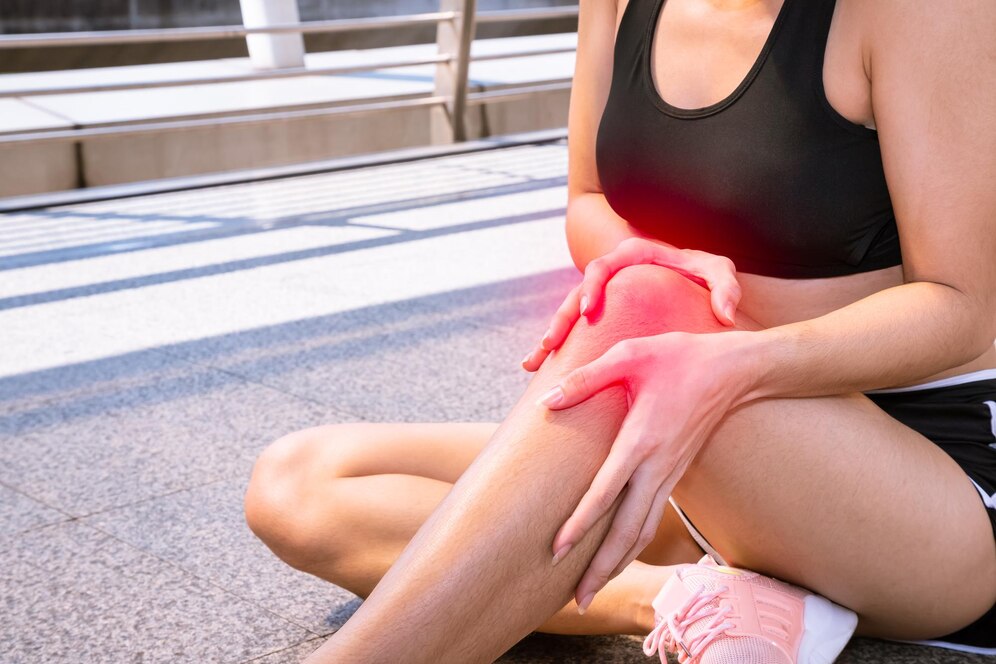Improving your flexibility and mobility doesn't have to be complicated. You can start with simple techniques that seamlessly fit into your routine. By incorporating dynamic stretching, practicing yoga, and using foam rollers, you can address tight muscles and enhance your overall movement. Engaging in resistance training and ensuring proper hydration also play vital roles in supporting muscle elasticity. If you're curious about how these methods can transform your physical performance and well-being, keep exploring the details of each approach.
Incorporate Dynamic Stretching
When it comes to enhancing your flexibility and mobility, incorporating dynamic stretching into your routine is essential. Dynamic stretching involves active movements that take your muscles and joints through their full range of motion. Unlike static stretching, where you hold a position, dynamic stretches warm up your body and prepare it for physical activity.
Start your dynamic stretching routine with movements that target the major muscle groups. Think leg swings, arm circles, and torso twists. These exercises not only increase blood flow but also improve your overall flexibility. For instance, leg swings can help loosen your hip joints, while arm circles prepare your shoulders for various activities.
You'll want to incorporate these stretches before workouts or any physical activity. Aim for 5 to 10 minutes of dynamic stretching to effectively enhance your mobility. As you progress, increase the range of motion and speed of your movements to challenge your body further.
Additionally, consider adding sport-specific dynamic stretches based on your activities. If you're a runner, high knees and butt kicks can be incredibly beneficial. For those into sports like soccer or basketball, lateral shuffles and carioca can help improve agility while enhancing flexibility.
Practice Yoga Regularly
Practicing yoga regularly can greatly enhance your flexibility and mobility. By incorporating various poses and stretches into your routine, you'll engage different muscle groups, promoting a greater range of motion. Each session encourages you to explore your limits, allowing your body to gradually adapt and improve over time.
Start with foundational poses like Downward Dog, Warrior I, and Child's Pose. These positions not only stretch specific areas but also strengthen the muscles that support your joints. As you progress, challenge yourself with more advanced postures, such as Pigeon Pose or Bridge Pose, which require deeper flexibility and control.
Consistency is key. Aim for at least two to three sessions a week, even if they're just 20 to 30 minutes long. You'll notice improvements in how your body feels and moves, both during yoga and in your everyday activities.
Practicing mindfulness during your sessions also helps you tune into your body, recognizing areas of tension or tightness that may need more attention.
Don't forget to focus on your breath. Deep, controlled breathing not only enhances the benefits of each pose but also helps you relax, making your practice more enjoyable. Over time, you'll build not just flexibility but also a stronger mind-body connection.
Use Foam Rollers
Foam rollers are an incredibly effective tool for enhancing flexibility and mobility. By using them, you can release tension in your muscles and fascia, which often leads to improved range of motion and decreased soreness. When you roll over tight areas, you're fundamentally providing a form of self-myofascial release, helping to break down knots and adhesions that can restrict movement.
To get started, find a foam roller that suits your needs; they come in various densities and sizes. If you're new to foam rolling, you might want to begin with a softer roller. Once you're familiar with the technique, you can gradually shift to a firmer roller to target deeper tissues.
Start by positioning the foam roller under the area you want to work on, such as your calves, quads, or back. Use your body weight to gently press down and slowly roll back and forth over the muscle. Aim for about 30 seconds to a minute on each area, focusing on spots that feel particularly tight.
Don't rush; take your time to allow the muscle fibers to release.
Incorporating foam rolling into your routine can be particularly beneficial before and after workouts. Before exercising, it prepares your muscles, while post-workout rolling helps speed up recovery.
Engage in Resistance Training
Resistance training can be a game changer for enhancing flexibility and mobility. While many people associate resistance training solely with building muscle, it also plays a vital role in improving your overall range of motion. When you engage in resistance exercises, you challenge your muscles through various movements, which helps them adapt and become more flexible over time.
Start incorporating a variety of exercises that target different muscle groups. Use free weights, resistance bands, or even your body weight. Focus on compound movements like squats, lunges, and push-ups, as these engage multiple joints and muscles, promoting greater flexibility.
As you perform these exercises, pay attention to your form and range of motion. Make sure you're moving through the full extent of your capabilities; this will help you release tight muscles and improve mobility.
Another effective strategy is to include dynamic stretches in your warm-up or cool-down routines. These stretches can help activate your muscles and prepare them for resistance training. For instance, leg swings and arm circles can enhance flexibility while you're getting ready for your workout.
Remember to gradually increase the resistance or weight as you progress. This not only helps you build strength but also encourages your muscles to adapt, further enhancing flexibility.
Consistency is key, so make resistance training a regular part of your fitness routine. With dedication, you'll notice significant improvements in your flexibility and mobility, allowing you to perform daily activities with ease.
Maintain Proper Hydration
Staying hydrated is essential for enhancing your flexibility and mobility. Water plays a critical role in maintaining the elasticity of your muscles and joints. When you're well-hydrated, your body can efficiently transport nutrients to your cells, which is crucial for recovery and performance. Dehydration can lead to muscle stiffness and cramps, making it harder for you to move freely.
To maintain proper hydration, aim to drink water consistently throughout the day, not just during workouts. A good rule of thumb is to drink at least half your body weight in ounces of water daily. For instance, if you weigh 160 pounds, target around 80 ounces of water every day. Adjust this based on your activity level, climate, and individual needs.
During exercise, consider drinking water before, during, and after your sessions to replenish fluids lost through sweat. If you're engaging in intense or prolonged physical activity, electrolyte-rich beverages can help replace lost salts, further supporting your mobility.
You can also incorporate water-rich foods into your diet, such as fruits and vegetables. Foods like cucumbers, oranges, and watermelons can contribute to your daily hydration goals while providing essential vitamins and minerals.
Conclusion
By incorporating dynamic stretching, practicing yoga, using foam rollers, engaging in resistance training, and maintaining proper hydration, you can markedly enhance your flexibility and mobility. These strategies not only help improve muscle elasticity but also promote overall physical well-being. Make these practices a regular part of your routine, and you'll notice increased movement ease and reduced tension in your body. Start today, and feel the difference in your flexibility and mobility!



